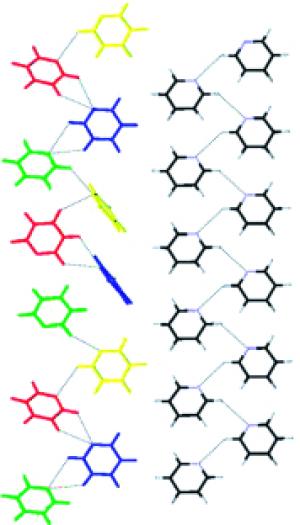Replacing the hydrogen nuclei in the pyridine molecules, which form the basis of the pharmaceutical industry, with deuterium atoms, will help create a new type of skeleton for drugs

The nuclei of ordinary hydrogen atoms contain only a single proton. If you add a neutron, the hydrogen turns into deuterium. In principle, compounds containing deuterium instead of hydrogen atoms are chemically identical. However, there may be significant differences. For example, "heavy water", water that contains deuterium instead of hydrogen, is toxic because it interferes with highly sensitive biochemical processes in the body and leads to metabolic failure.
As researchers report in a scientific article in the journal Angewandte Chemie, when the pyridine atoms are replaced by deuterium atoms, they lead to a crystalline form that can only be obtained under high-pressure conditions for normal pyridines. It is possible that the minute differences responsible for this type of effect could be used to improve the range of available properties of medicinal materials.
Pyridine is a hexagonal ring with five carbon atoms and one nitrogen atom. Each of the carbon atoms is bonded to one hydrogen atom. These can be replaced with deuterium atoms. A research team led by Roland Boese from the University of Duisburg-Essen in Germany discovered that pyridine containing deuterium crystallizes at a temperature of minus eighty-five degrees Celsius into a crystalline form different from that obtained from normal pyridine. At the same time, British researchers working with Simon Parsons determined that deuterium-deficient pyridine at high pressure also leads to this form, because it occupies a smaller volume than the normal pyridine structure.
The replacement of hydrogen atoms with deuterium atoms clearly changes the strength of interactions between different groups of atoms in neighboring atoms, making other structural arrangements more energetically preferable. These relationships between different groups of atoms also play a decisive role in medicinal substances, for example when a drug needs to match structurally as perfectly as possible to the active site of an enzyme. Subtle changes can lead to significant differences in drug activity.
This is the reason why researchers are so interested in deuterium-containing pyridines: pyridine is an important starting material in the pharmaceutical industry, and its structural skeleton is found in many drugs. The lead researcher believes that replacing hydrogen atoms with deuterium will enable the development of new drugs that will be more specific or have fewer side effects than their conventional counterparts.
On the same topic on the science website:

4 תגובות
How to change?
My father is right.
A silly mistake that originates in good faith.
My sincere apologies.
Author's mistake
"If you add an extra proton, hydrogen becomes deuterium"
Deuterium is an isotope of hydrogen with an excess of neutrons and has only one proton.
There are no heavy Friedmans 🙂